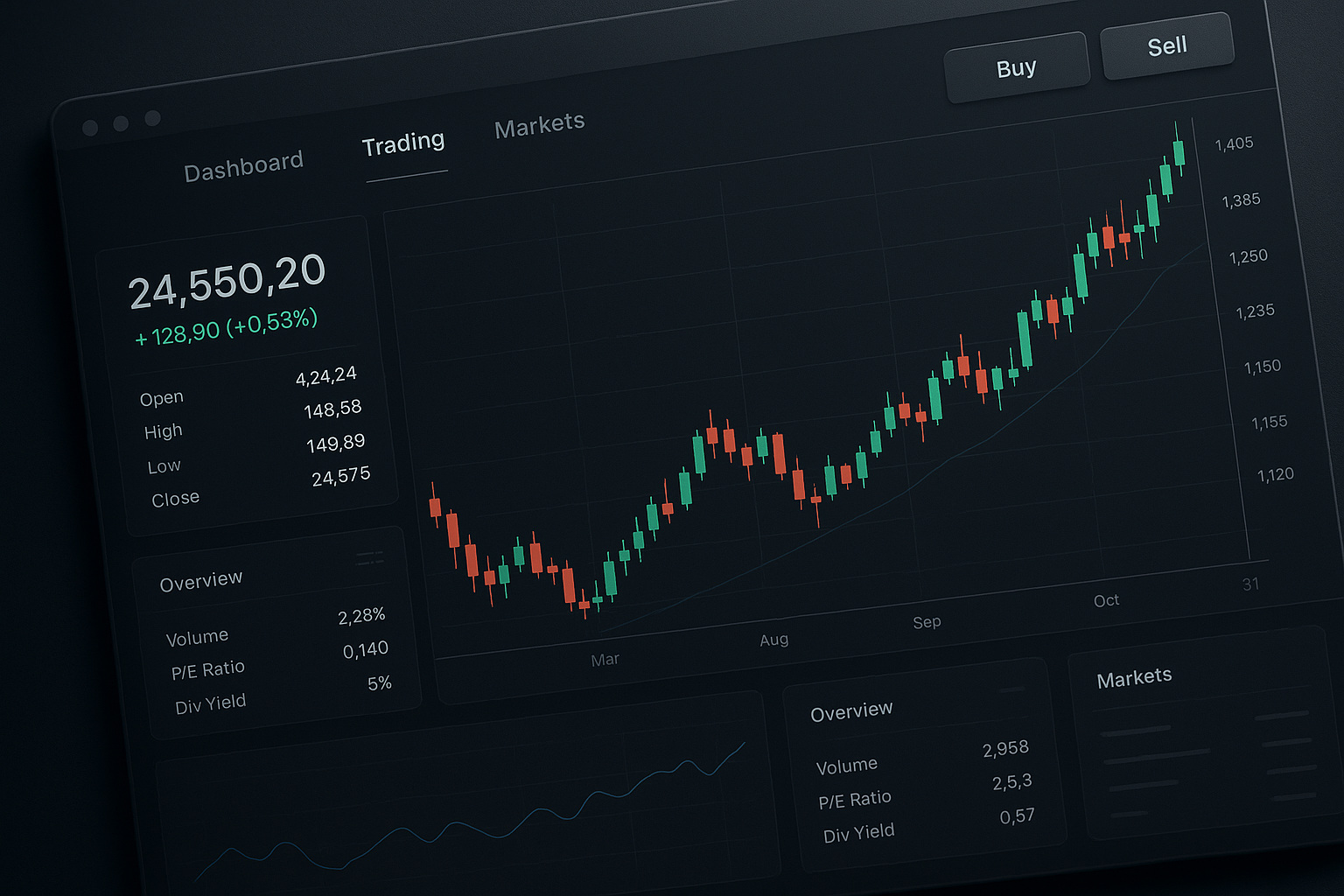
Trading in 2025 demands more than following yesterday’s playbook. Fast-moving markets, data-driven volatility, and relentless competition are reshaping the landscape. For serious traders, the difference between consistent profits and costly setbacks is determined by the strength of their strategy, their ability to adapt, and the quality of their network. At Market Masters, we equip intermediate and advanced traders with the tools, mentorship, and community insights required to outperform—no matter how the market shifts. This guide walks you through the key elements of developing a trading strategy that can thrive in changing markets and sets you on a path to join the elite minority who succeed.
To build a strategy that works in 2025, traders must first understand the evolving dynamics of today’s markets. Unlike previous years, the trading environment is now characterized by increased speed of information, heightened algorithmic participation, and a greater frequency of regime changes. These shifts demand heightened vigilance and an adaptive mindset.
Algorithmic and high-frequency trading now accounts for a significant portion of daily volume, amplifying both liquidity and fleeting opportunities. This means price action can become erratic, with false breakouts and rapid reversals commonplace. The modern trader must be equipped to recognize and adapt to these fast transitions, or risk being left behind.
Sentiment-driven moves, often catalyzed by social media, central bank policy shifts, or macroeconomic surprises, can trigger sudden volatility spikes. Traders must be prepared to adjust strategies quickly when market regimes change from trending to ranging, or from calm to volatile. Recognizing these shifts—sometimes within a single session—can determine whether you capture alpha or suffer losses.
Compounding these challenges, the competitive landscape is unforgiving. The reality is that “Approximately 90% of day traders fail within the first year of trading.” This statistic underscores the critical importance of developing a robust, adaptable strategy and not relying on static, outdated methods.
Market Masters prioritizes high signal-to-noise insight, emphasizing that traders must constantly reassess their edge. The ability to synthesize macro trends, sector rotations, and microstructure shifts is no longer optional. In 2025, traders who systematically evaluate the market context—and respond with discipline—will be best positioned for success.
Constructing a trading plan that endures in changing markets requires more than a set of entry and exit rules. It demands a holistic approach, integrating multiple dimensions of market understanding and personal discipline. Here are the foundational components that separate high-performing traders from the rest:
Layering these components enables traders to build adaptive, resilient strategies. At Market Masters, we emphasize that a robust plan is a living document—constantly tested, reviewed, and improved. This philosophy is essential for navigating the shifting sands of 2025’s markets.
Finally, the hard truth remains: “Over 80% of day traders quit within the first two years.” Commitment to continuous learning and disciplined execution is the true differentiator.
Technical analysis remains a cornerstone for traders seeking to adapt to changing markets. However, in 2025, it’s not simply about memorizing chart patterns or following moving average crossovers. The effective use of technical analysis lies in the synthesis of tools, context, and flexibility.
Successful traders integrate multiple layers of technical analysis, including:
Market Masters advocates for technical analysis that is both systematic and adaptive. This means having a playbook but knowing when to deviate based on changing volatility, liquidity conditions, or macro catalysts. For example, a strategy that thrives in trending environments must be reevaluated during periods of chop. The trader’s edge lies in recognizing these inflection points and adjusting accordingly.
In summary, technical analysis in 2025 is about much more than indicators—it’s about reading the market’s language, staying flexible, and integrating multiple sources of confirmation before acting. This discipline is what turns theory into results.
Risk management is the foundation upon which all resilient trading strategies are built. In 2025, with volatility spikes becoming more unpredictable, robust risk protocols are non-negotiable. As the statistics reveal, “The average day trader loses around $15,000 per year.” Effective risk management is what ensures you don’t become part of that majority.
Key risk management techniques for today’s volatile landscape include:
It’s also critical to recognize and respond to drawdowns. “Approximately 60% of day traders have experienced significant financial setbacks during their trading career.” At Market Masters, we stress the importance of reviewing losing streaks to identify whether they stem from strategy deficiencies, execution errors, or simply adverse market conditions. This reflection process allows traders to pause, make data-driven adjustments, and recover with discipline.
Ultimately, risk management is not about avoiding losses entirely—it’s about ensuring that no single loss, or series of losses, can take you out of the game. In the high-stakes environment of 2025, this is the trait that separates the professionals from the rest.
While self-directed study is important, the reality is that trading can be an isolating pursuit. The best traders accelerate their learning curves and performance by tapping into high-caliber networks and mentorship. At Market Masters, we believe that community and mentorship are force multipliers for success.
Here’s why leveraging community insights and mentorship is essential:
“Only about 4% of day traders who try will make a profit in any given year.” By leveraging mentorship and a high-quality network, you dramatically improve your odds of joining this elite cohort. The collective intelligence of a dedicated community can help you identify edge cases, avoid pitfalls, and stay on the cutting edge of evolving market tactics.
For those committed to outperforming in 2025, resources like https://marketmasters.chat offer the blend of actionable insights, advanced education, and mentorship necessary to succeed where most fail.
In summary, the journey to trading excellence is not one you need to take alone. By integrating technical mastery, disciplined risk management, and the collective wisdom of a professional community, you give yourself the best chance to not just survive—but thrive—in the markets of tomorrow.